When you buy through our links, we may earn money from our affiliate partners. Learn more.
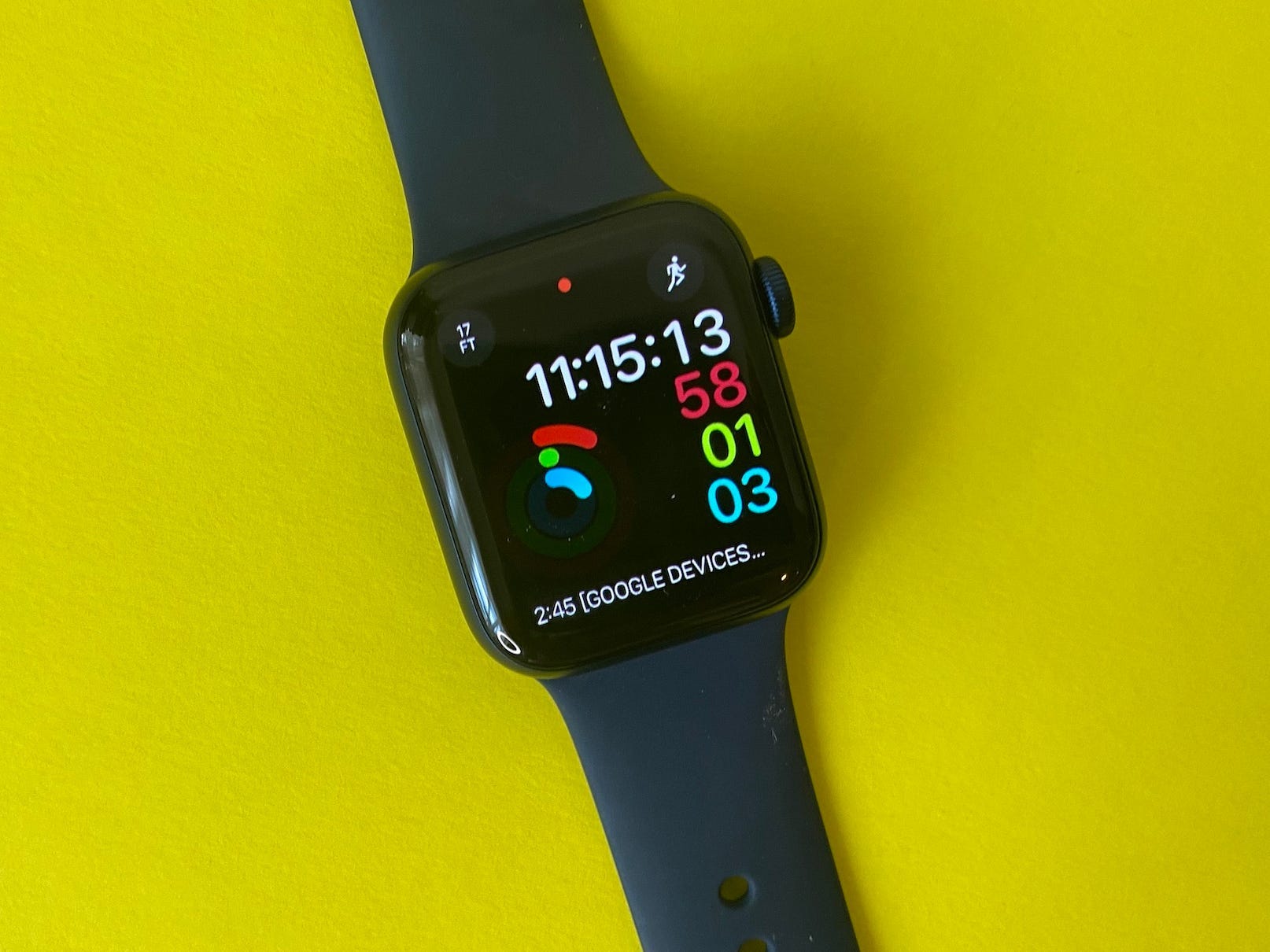
- The $400 Apple Watch Series 6 brings advancements like blood oxygen readings, a brighter always-on display, and faster charging.
- Blood oxygen saturation refers to the percentage of oxygen your red blood cells distribute throughout your body.
- The blood oxygen reader has been generally consistent during the two weeks I’ve spent using the watch, but since it’s not meant for medical use it can be difficult to know how to interpret these readings.
- Overall, the Series 6 is the best choice for people who value having an always-on screen, faster charging, and more sophisticated health features.
- Otherwise, the cheaper Apple Watch SE offers most of the Apple Watch experience with little compromise at a more affordable price.
Health tracking has always been one of the Apple Watch’s most important attributes, and Apple is doubling down on that focus with its newest model. The $400 Apple Watch Series 6, which Apple launched on September 18, is the company’s first to come with the ability to measure a wearer’s blood oxygen levels, offering another metric for owners to measure their overall wellness.
The Apple Watch Series 6 replaces the Series 5 in Apple’s lineup, which means it also inherits features like the ability to measure an electrocardiogram, detect hard falls, and keep its screen on even when idle. But, for the first time, Apple also launched a second new model with a cheaper price tag called the Apple Watch SE. This $280 watch lacks some of the Series 6’s more advanced capabilities, like its blood oxygen sensor, always-on screen, and ECG reader, but still offers the larger screen found on newer models, fall detection, and other features.
The Series 6 also brings some welcome improvements other than blood oxygen measurements, such as faster charging, a brighter always-on display, and faster processor. But, in terms of where it fits into Apple’s lineup, the Series 6 is more geared toward those in search of a health-oriented smartwatch with features that go far beyond the basics. Those who just want the general Apple Watch experience will likely do just fine with the Apple Watch SE. Current Apple Watch owners should only consider upgrading to the Series 6 if they own the Series 3 or older.
Here's a longer look at what it's been like to use the Apple Watch Series 6.
Apple Watch Series 6 specifications
- Size options: 44 millimeter or 40 millimeter
- Display: 44mm: 368 x 448 pixels, 977 square mm display area; 40mm: 324 x 394 pixels, 759 square mm display area
- Processor: Apple S6 system-in-package
- Health tracking: Blood oxygen sensor and app, electrical and optical heart sensors, ECG app, high and low heart rate notifications, irregular heart rhythm notifications, fall detection, sleep tracking
- Features and sensors: Always-on display, compass, always-on altimeter, GPS, emergency SOS, international emergency calling, Apple Pay, GymKit, U1 chip and ultra-wideband support
- Battery life: Up to 18 hours
- Durability: Water resistant up to 50 meters
- Storage: 32GB
- Finishes: Aluminum, stainless steel, titanium
- Colors: Aluminum: silver, space gray, gold, blue, red; Stainless steel: silver, graphite, gold; Titanium: natural titanium, space black
Design
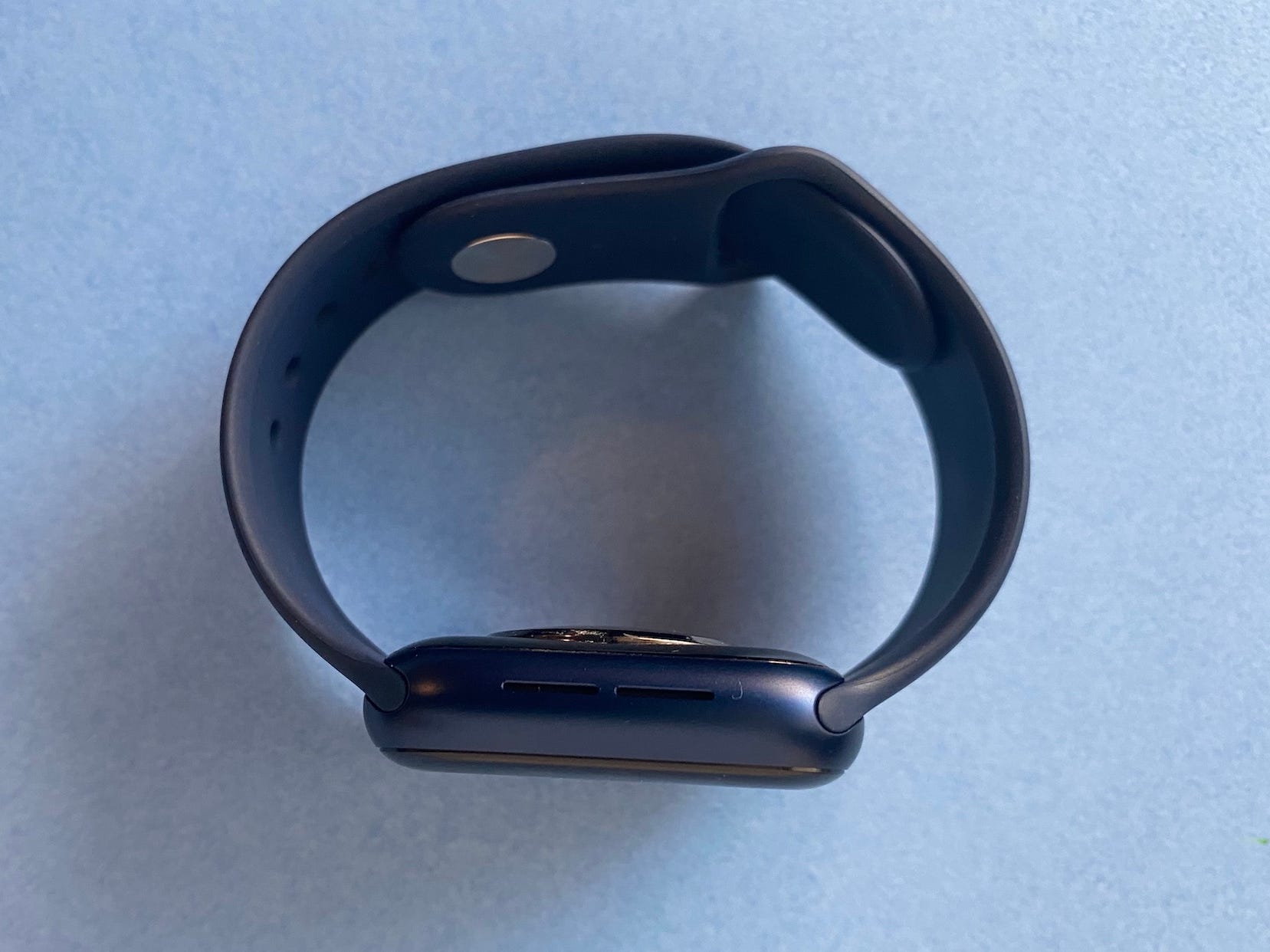
If you're already familiar with the Apple Watch, the Series 6 won't look dramatically different. But, Apple has made some improvements when it comes to color options and the watch's always-on display.
The Series 6 comes in new red and blue color choices and has a screen that can shine brighter when in always-on mode. That makes it a bit easier to see information displayed on the watch's screen when the device is idle, especially while wearing it outdoors.
The update is slightly noticeable; when compared alongside the Series 6 in the photo below, you'll notice the time displayed on the Series 6 looks slightly bolder.
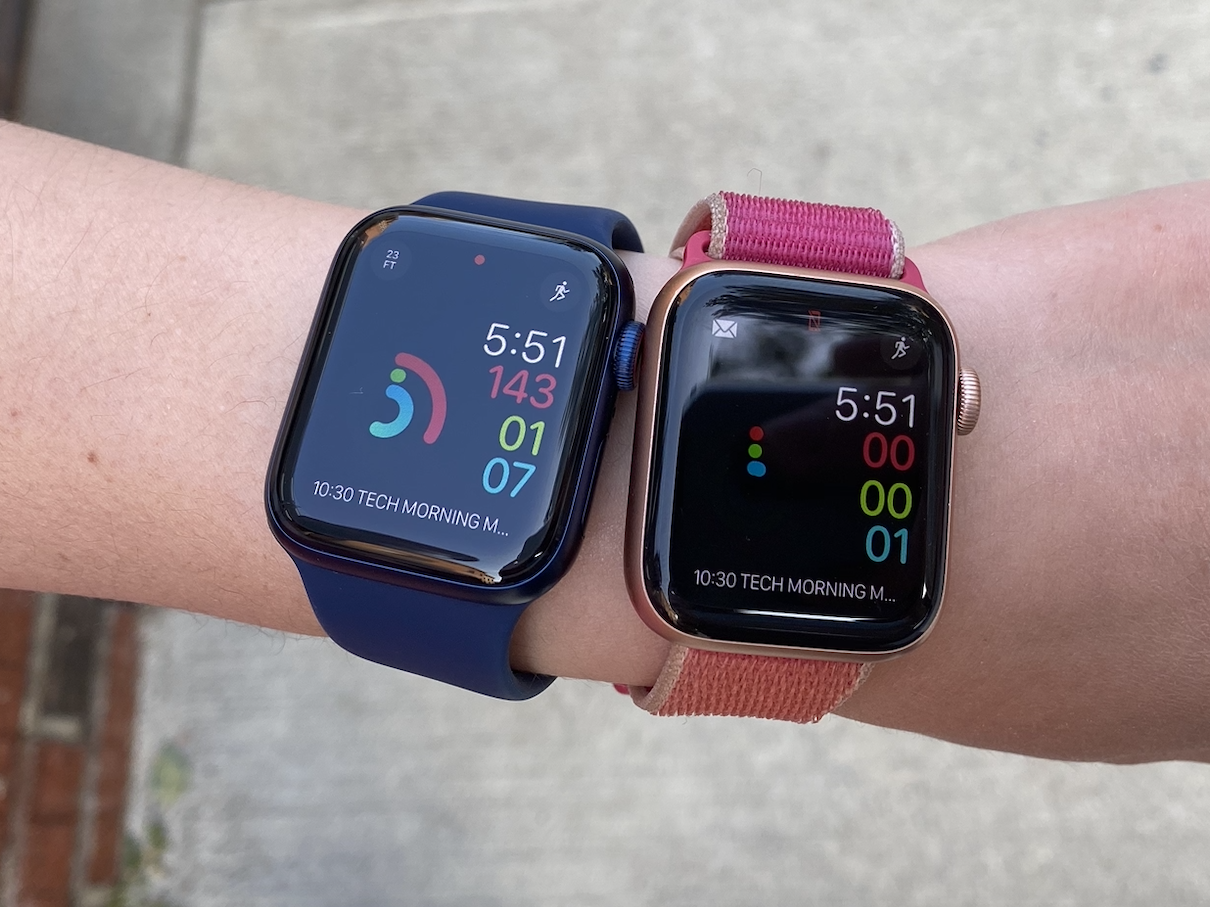
The always-on display is one of the biggest benefits you'll see from choosing the Series 6 over the SE or Series 3, aside from its health features. Although the Series 6 and SE both share the larger-sized screen Apple introduced with the Series 4 in 2018, the Series 6 is the only model Apple currently offers that can display information on screen even when idle.
The Apple Watch Series 6 is also more customizable than the SE and Series 3, and not just because of its color choices. The Series 6 also comes in aluminum, stainless steel, and titanium finishes, whereas the other watches are only available in aluminum.
Overall, the new colors give the Series 6 a bit of a bolder look compared to the space gray and silver models.
Blood oxygen readings
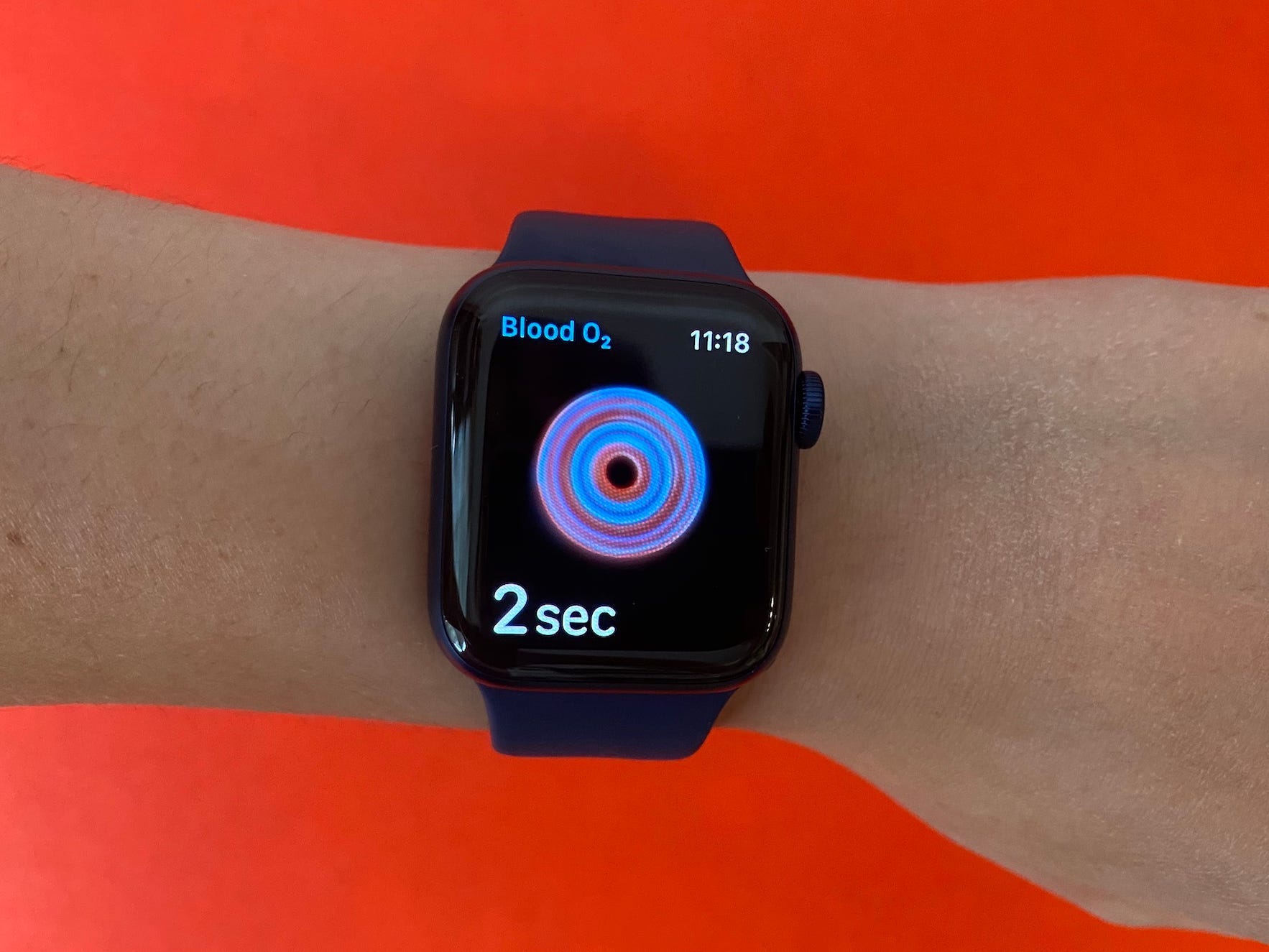
The Apple Watch Series 6's most significant update is its ability to measure oxygen saturation in the blood, which refers to the percentage of oxygen your red blood cells distribute throughout your body.
Such readings have been helpful in flagging potential COVID-19 cases when serious symptoms aren't showing. But Apple says this feature isn't intended for medical use and is only meant to be another metric by which to measure your overall wellness. Blood oxygen levels of between 95% and 99% are considered to be normal.
You can take a blood oxygen reading manually anytime by launching the app on your wrist, but the watch can also perform readings in the background when you're at rest too. The reader works by shining red and green LEDs and infrared light through your wrist and then monitoring the light that's reflected back.
The watch's algorithms determine the color of your blood, and based on those findings the watch determines how much oxygen is in your blood. Blood oxygen measurements are traditionally taken through pulse oximeter devices that clamp onto your finger.
In my experience, the Apple Watch's blood oxygen readings were generally consistent and landed within the range of 95% and 100% over the course of roughly two weeks. But, there were two troubling instances in which the readings dipped below 90%, which would indicate that something could be seriously wrong. I'm not the only one who had this experience — The Washington Post's Geoffrey Fowler reported similar findings.
The accuracy of the readings depends on the fit of your Apple Watch, how still you keep your arm, and whether the back of your Apple Watch is flush against your wrist. I've been wearing the Series 6 with Apple's new Solo Loop band, which comes in a fixed size that isn't adjustable and sometimes fits a bit more loosely than the Sport or Sport Loop bands I typically wear. It's possible that the watch slipped and simply didn't have a snug enough fit to get an accurate reading in those few circumstances.
Even so, it's generally more important to look at overall trends rather than one-off readings, according to experts who spoke with Consumer Reports on the topic. At-home pulse oximeters also aren't typically intended for medical use and haven't been put through the same testing as those used in medical environments, the report also says.
But, I wouldn't recommend purchasing the Series 6 specifically for the blood oxygen reader alone — and not because of any qualms with its accuracy. Rather, it's because since the Apple Watch's blood oxygen readings aren't intended for medical use, it can be difficult to know exactly how to interpret these results and how they contribute to overall wellness. Apple does offer some articles in its health app that explain what blood oxygen levels mean, but I'd like to see more insight in the readings themselves.
Other health tracking features
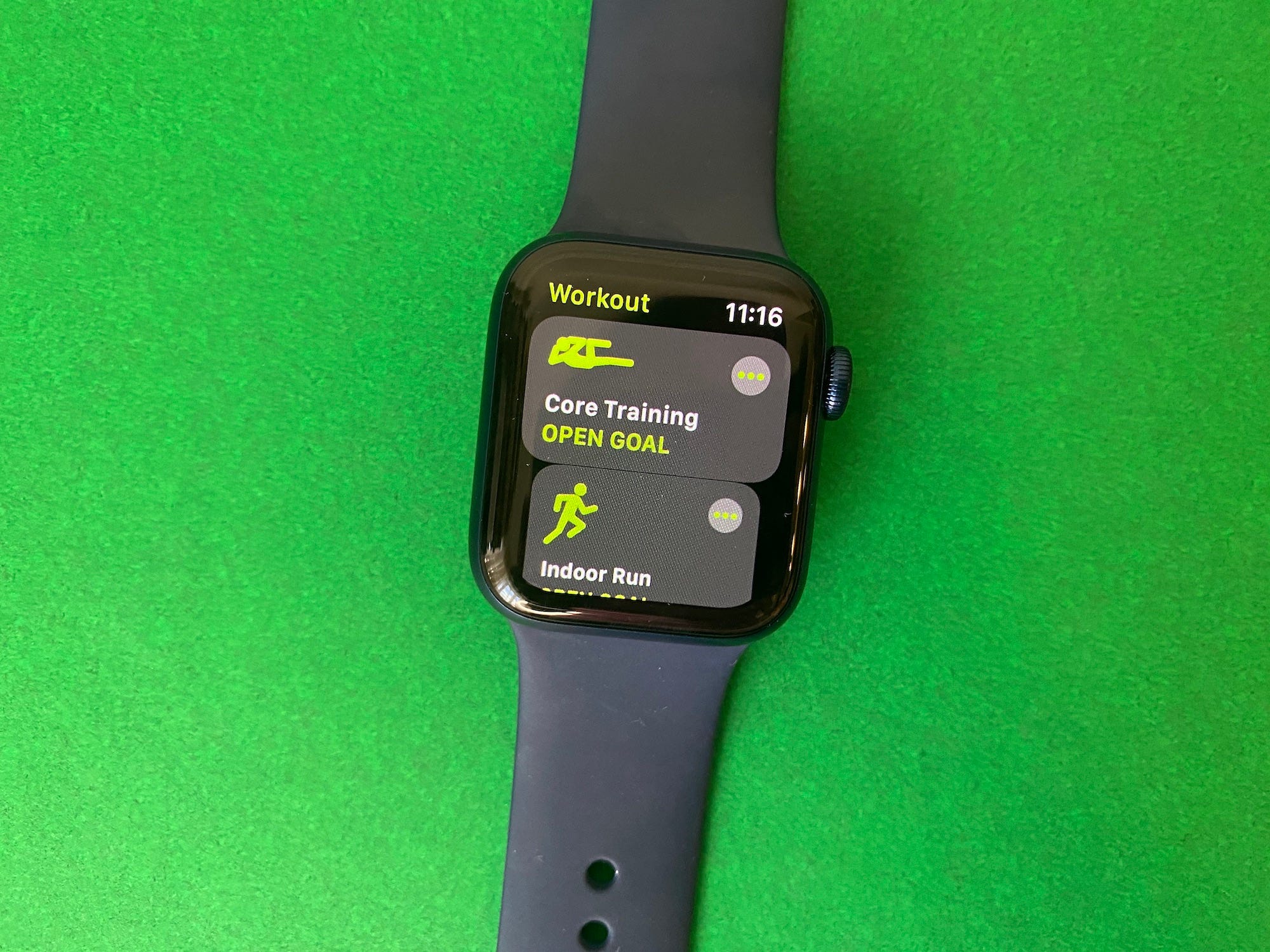
Like its predecessors, the Apple Watch Series 6 can take an electrocardiogram from the wrist, a feature that's been cleared by the Food and Drug Administration. The ECG generated by the Apple Watch is similar to a single-lead electrocardiogram, according to Apple, and can indicate whether your heart rhythm is showing signs of atrial fibrillation. Watches from Fitbit and Samsung also offer similar functionality.
These two features — the ability to check your blood oxygen saturation and take an ECG from the wrist — are the biggest differentiators between the Apple Watch Series 6 and Apple Watch SE. Both watches can detect when you've taken a hard fall and support international emergency calling, unlike the Series 3.
And, of course, the Series 6 still shines as a general activity tracker and workout companion, just like Apple's older watches. Apple offers a variety of different workout types, which are available on the Series 6 as well as the SE and Series 3. The Apple Watch and competing devices made by Fitbit are both capable of tracking specific workout types like running, walking, hiking, elliptical, swimming, and yoga among others.
Hikers and runners will also probably appreciate the Series 6's always-on altimeter, which can measure changes in elevation in real time both indoors and outdoors. This feature is also available on the cheaper Apple Watch SE.
Now that Apple has launched its watchOS 7 update, all compatible Apple Watch models can track your sleep as well, a feature that Apple's smartwatch had long been lacking compared to rivals like Fitbit. The Apple Watch can measure how much time you've spent asleep each night, the time you fell asleep and the time you woke up, and a summary of your heart rate data throughout the night.
It's helpful, but not nearly as comprehensive as data offered by rival devices like those made by Fitbit, which can track the quality of your sleep and tell you how much time you've spent in light, deep, and REM sleep.
The Apple Watch Series 6 also lacks a couple of features found on Fitbit's new Sense smartwatch, like the ability to see how stress impacts the body and skin temperature measurements. But some reviewers have said that Fitbit doesn't do enough to make this data useful and palatable for wearers.
Software
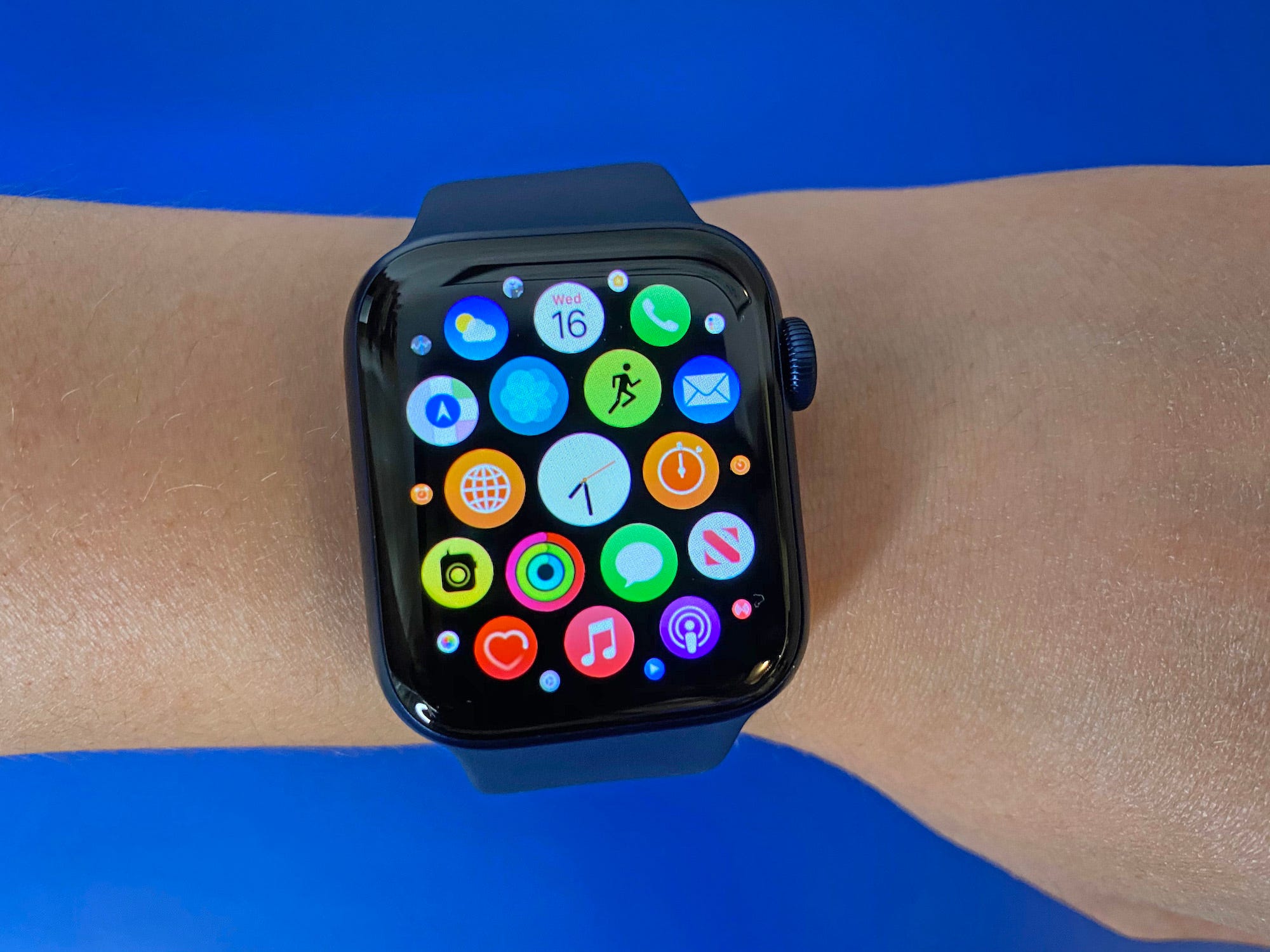
All of the smartwatches in Apple's current lineup — which include the Series 3, SE, and Series 6 — support watchOS 7, the new software update Apple announced in June. The upgrade brings new features like the ability to track sleep, share customized watch faces with friends and family, log new workout types, and manage an Apple Watch for a child or other family member.
Overall, I've generally found that the Apple Watch's software is a key area in which it excels over Fitbit, even though Fitbit devices generally offer longer battery life, better sleep tracking, and come at a more affordable price. The Apple Watch has a much larger pool of apps to choose from and software features that are more polished. The Apple Watch's always-on display, for example, is more customizable than Fitbit's, and notifications are much more feature-rich.
Battery life and performance
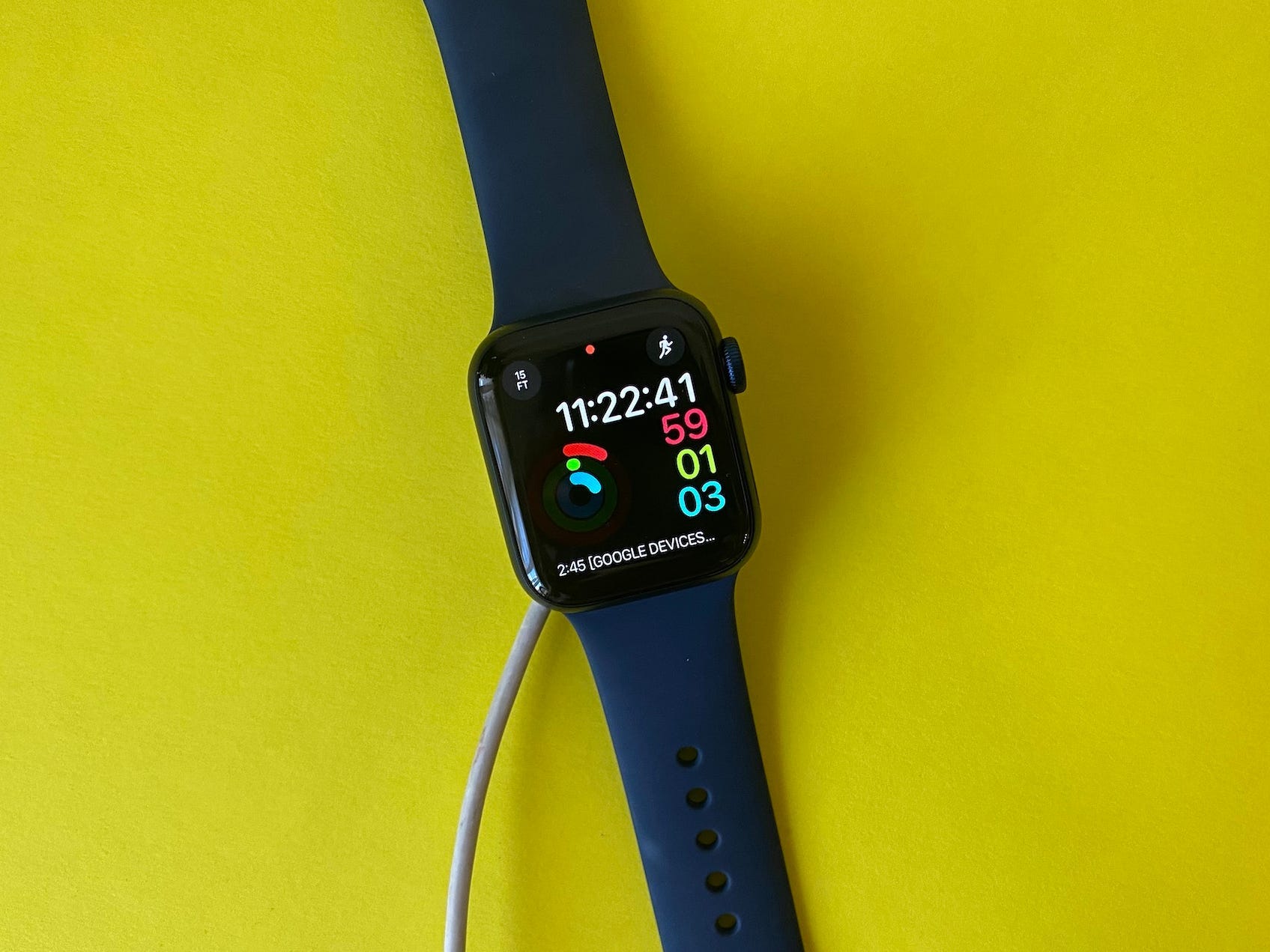
Even with the Series 6, the Apple Watch still doesn't offer multi-day battery life. In my experience, I'm usually able to get through a little more than a day and a half before it's time to put the watch back on its charger. That means if you plan to track your sleep with the Apple Watch, you'll have to remember to carve out time during the day to charge it. Fitbit smartwatches, by comparison, can last for several days without running out of juice.
Although the battery life hasn't changed much, Apple has made it easier to quickly charge up your watch before leaving the house. Apple says the Series 6 can charge more quickly than its predecessor, and in my experience it lives up to those claims. After 20 minutes of charging, the Series 6 reached 35% while the Series 5 only charged to 21%.
The Series 6 also runs on a speedier, new S6 processor that the company says should run up to 20% faster. I didn't notice this much when switching from the Series 5 to the Series 6, however, but you'll likely experience a speed boost if you're upgrading from an older watch. The Series 6 comes with support for ultra-wideband tech as well, which will eventually enable the watch to serve as a smart car key.
The bottom line
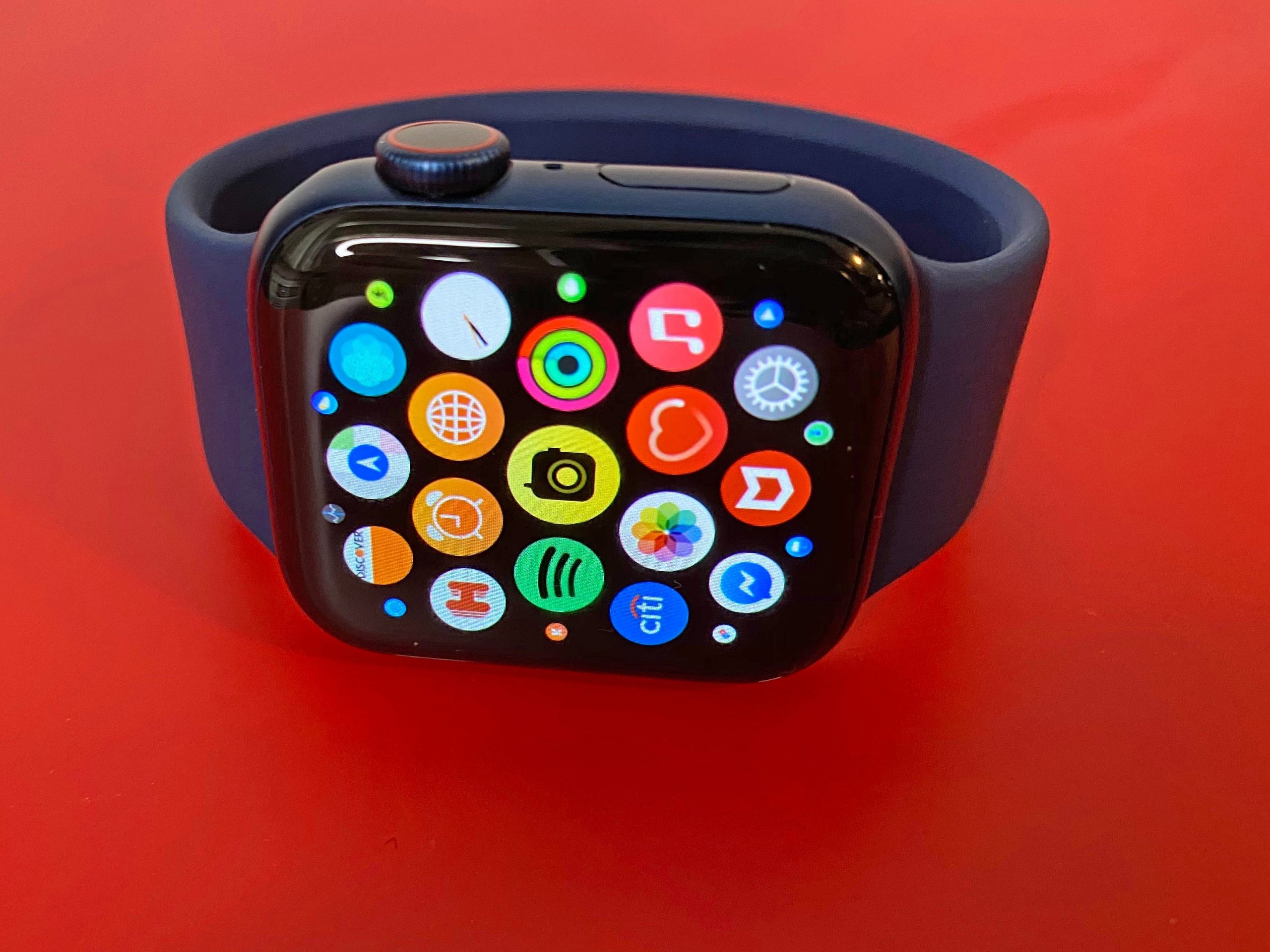
With new health measurements like blood oxygen monitoring, a better always-on display, faster charging, and a new processor, the Apple Watch Series 6 is a solid successor to the Series 5.
The Series 6's blood oxygen sensor is its biggest new feature, but it can be difficult to argue that the blood oxygen readings alone makes the Series 6 worth buying. It's just one piece of the health offerings Apple offers, and since it's not intended for medical use it's difficult to tell exactly what to do with these readings. When my blood oxygen saturation dropped to 87%, for example, I didn't know if I should consult a doctor or just chalk it up to my watch not fitting properly.
Buy the Series 6 if you also prioritize the other benefits it offers, like an always-on screen, the ability to take an ECG, more customization options, and faster charging and performance.
Those who just want an Apple Watch with a larger screen and faster performance than the aging Series 3 will get by just fine with the Apple Watch SE. It still offers all of Apple's core health features and many of the same features as last year's Series 5, such as international emergency calling and a built-in compass, but lacks the always-on screen.
Pros: Brighter always-on display; Faster charging; Bold new color options; Blood oxygen readings expand Apple Watch's health offerings
Cons: Battery life could be better; Sleep tracking is basic compared to other fitness trackers; Not always clear how blood oxygen readings add to overall health metrics

